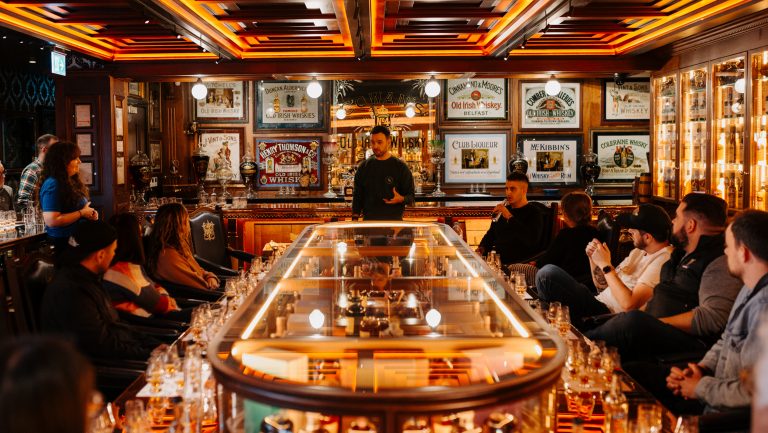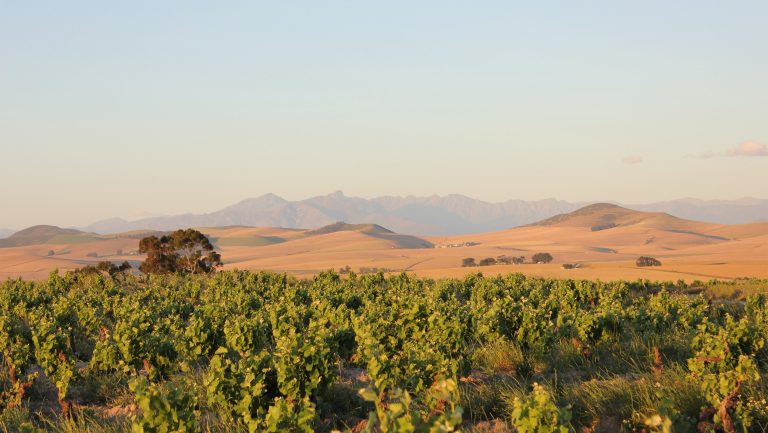At the end of November 2020, I closed my bar for the second time. Donna Cocktail Club was a modern Brooklyn cocktail bar that built a loyal following over the better part of a decade, known for its laid-back and welcoming vibe, delicious but no-frills food, and some of the most creative, crushable cocktails using agave and sugarcane distillates in New York City.
Obstacles early in our business forced me to crystalize my instincts for the bar into a business plan that brought us back from one tragedy, breaking sales records year after year, only to have COVID-19 halt us at our peak. But the lessons I learned during ownership are valuable for operators making their business plans in a post-pandemic world—and maybe even for the Donna of the future.
A Bar’s Genesis
The idea for Donna sparked when I was a bartender at the farm-to-table darling Marlow & Sons in the summer of 2010. Customers flooded our doors, and I was struck that there was nowhere obvious nearby to send them for a drink while they waited for a table, or after dinner if the evening had momentum.

Don’t miss the latest drinks industry news and insights. Sign up for our award-winning newsletters and get insider intel, resources, and trends delivered to your inbox every week.
I was enamored with Andrew Tarlow’s (and Mark Firth’s, his partner at the time) ability to create indelible dining experiences in environments that were stylish, but also relaxed and worn-in. They created environments where you could down oysters and cloudlike chicken liver mousse, while guzzling glasses of Loire Chenin Blanc, all in a ripped band t-shirt and dirty jeans without feeling out of place. “Elegant spaces for dirty kids,” is how I summarized it at the time.
I wanted to build a cocktail bar to complement these restaurants. One that wasn’t stuffy, but was as gracious as the bartenders who taught me; people like Lynette Marrero, Yanna Wolfson, and Jimmy Kearns, all of whom I worked with at the pivotal restaurant Freemans in the Lower East Side.
In spring 2011, we found a commercial space for rent just down Broadway from Marlow & Sons, in the “restaurant row” of Williamsburg, Brooklyn. After 5 ½ months of intense negotiations, I signed a lease which left me a narrow window of opportunity for reaping financial success—only seven years, with no option for renewal. It may have worked in a perfect world—but everything unforeseen happened.
Our opening night party in April 2012—which essentially stretched itself out over two days—was full of so many friends, former co-workers, and industry heroes of mine that I really felt like I had arrived. But keeping the bar open was going to test whether my good idea could grow into a good business plan, and whether I had the fortitude to see it through.
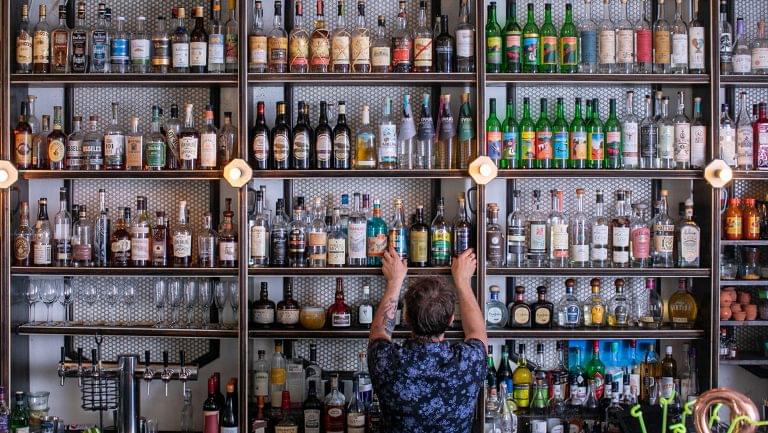
Overcoming Hardship and Debt
Running the business profitably was the first challenge. I was the front of house guy in my partnership, but I knew my partners, educated at Ivy League schools of business, would navigate us out of the red. Their painfully obvious solution: We needed more money to buffer us while we built momentum. I took out a private loan because I couldn’t get a bank loan without business history, one with high interest and no ability to pay down the principal. Six months in, the business still was not consistently breaking even. I had to make dramatic changes to make sure that my New York Times-reviewed cocktail bar wasn’t a commercial flop.
“Cocktails, tacos, and tunes” became the laser focus of our offering. Hearty, flavorful, but affordable food increased foot traffic during early hours and days of the week, with talented local DJs on the weekends to keep people dancing and drinking. Of course, the backbone of it all was the cocktail menu from our original head bartender Jeremy Oertel, including his playful twist on a Piña Colada (or Painkiller if you’re getting smart with me): the Brancolada, featuring Jamaican rum and Branca Menta.
Within a year, opening bartender Matthew Belanger (now the head bartender of Death & Co. Los Angeles) was promoted to head bartender. He pushed Jeremy’s flirtations with “tiki” further, approaching the canon of cocktails from this fraught genre like a distiller, who strips away what is offensive and keeps the hearts. Matt and Jeremy never adopted the ostentatious or appropriative aspects of tiki; they just made delicious, complex drinks that made you feel like you were lounging at a beach resort when you ordered them.
Donna grew into a go-to destination for civilians and professionals alike who scoured the city for the best sugarcane and agave distillates, along with cocktails that skillfully employed them.
At the same time, I dove into the accounting side of things, and became obsessed with the levers of business that make this infamously tenuous industry work. For starters, I took every single line item in our P&L (profit and loss statement) and identified what was a fixed expense (like rent) and what was a variable expense (like labor). The fixed expenses we didn’t have control over, but most of the variable ones we did.
The two biggest variable expenses were labor and cost of goods sold. I broke down these expenses on a day-by-day graph, using historical sales data for comparison, in order to ascertain which days were profitable and by how much, and which days were not. From there, I could try to make adjustments to move the unprofitable days from the red to the black. It was a two-pronged battle: It wasn’t just about cutting costs, but also creating a competitive offering and promoting what we did well. We didn’t invent “Taco Tuesday,” but we sure as hell made it look good. The business of the bar gained momentum, and we were finally profitable.
On Saturday, November 9th, 2013, 1 ½ years after opening, we faced a huge setback: An electrical fire between the ceiling of our bar and the apartment above, causing water to pour into the bar from the sprinkler system. Though we escaped without injury thanks to swift action from the FDNY, the damage forced us to shut down for almost ten months. For a business that had just gained momentum, it felt like a death knell.
Because we had only a small capital cushion, I took out another sizable bank loan (which paid off the former loan at a better rate) and allowed us to reopen by June 2014. Relieved, we were once again crazy busy, assuming our role as a Williamsburg institution, but we had an even longer way to go to get out of debt.
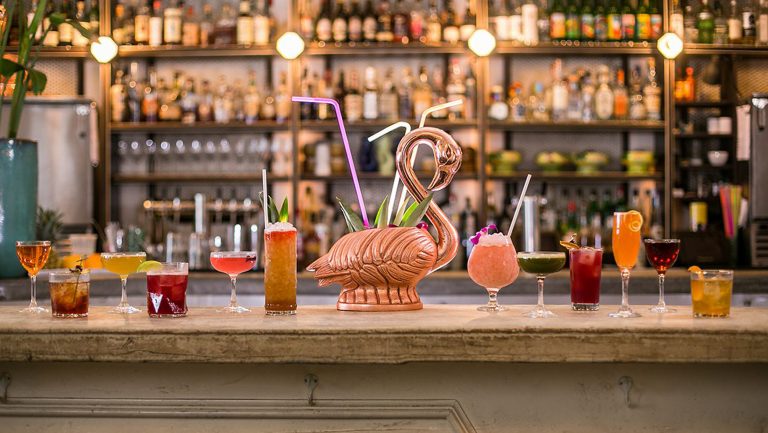
On the Brink of Success, a Pandemic
By December 2019, the commitment to stay the course paid off: I made the final payment on the loan. I had also saved a small capital cushion, and Donna was on track to distribute to partners in 2020, with two years left on a renewed lease. In the third week of February 2020, Donna posted its highest sales in a single day in our history. Less than a month later, we would be shuttered by state mandate due to COVID-19.
On the first day of the shutdown, we safely and strategically pivoted to take-away service through our tacos-to-go window. By May, things were looking up: I secured a PPP loan, and our landlady offered a rent reduction through the end of the year. But even with the addition of outdoor seating, we spent more money to operate than we were generating in sales. While we saw increased consumer traffic from third-party delivery services like Grubhub, that also meant we were paying commissions on a significant portion of our sales—prices we had already lowered to remain competitive. It was a double-edged sword in an already depressed marketplace.
Our sales peaked in September, and there was a glimmer of hope with indoor dining around the corner. But as the weather cooled, and indoor seating was limited to 25 percent capacity, our cash reserves were dwindling. In mid-October I informed the staff that a closure was possible unless indoor dining capacity was raised. Instead, an early curfew was imposed, and indoor dining was banned altogether through the winter.
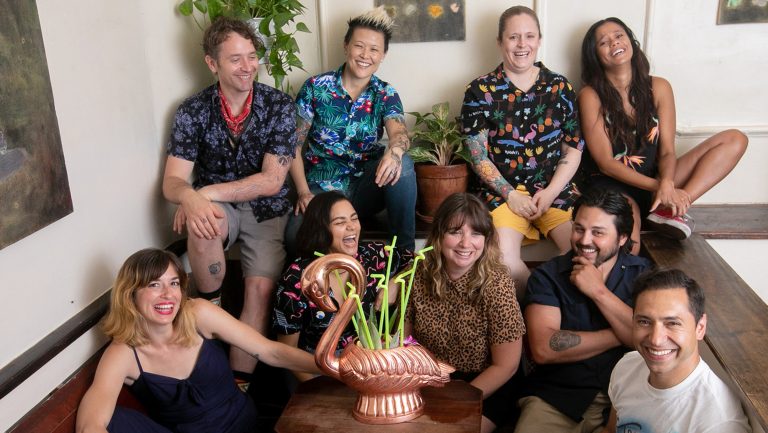
After 8 ½ years of service, we couldn’t overcome this plague. Donna offered its last service on Saturday, November 28, 2020. Even though we never reaped financial rewards, Donna is a bar where first dates, engagements, and even weddings occurred. Donna celebrated countless birthday parties, reunions, and sweaty night dance parties full of friends and people you wanted to become friends with. It was a place that made you feel warm, included, and beautiful, and it was so much fun.
When Donna shuttered, I pivoted into the retail side of the industry as the general manager of a neighborhood wine and spirits store in Prospect Lefferts Gardens, Brooklyn called Drink PLG. I’m grateful to have a job that allows me to use my experience with spirits and business acumen to work on a different but related model. And, as a father of two small children, the hours of operation of a retail store have been more agreeable to a family routine.
As fate would have it, a new twist in Donna’s story at 27 Broadway appeared in the early 2021: After the building was sold, the new landlords reached out to see if they could help bring Donna back. Much is still uncertain, but Donna’s story may have a new chapter in its original home.

Dispatch
Sign up for our award-winning newsletter
Don’t miss the latest drinks industry news and insights—delivered to your inbox every week.
Leif Huckman spent a decade working in high-profile clubs, bars and restaurants before pursuing his own vision with Donna in South Williamsburg in 2012. Since its opening, Donna has been awarded “Best New Bar in New York” and nominated for “Best Cocktail Bar in New York,” among other accolades.
In 2018, he designed The Hidden Pearl, an 18-seat cocktail bar situated behind a ramen restaurant in Greenpoint, described by Vogue as “one of New York’s most stylish new speakeasies.” Leif seeks to create dynamic environments that marry his appreciation for fine drinks and great parties.




